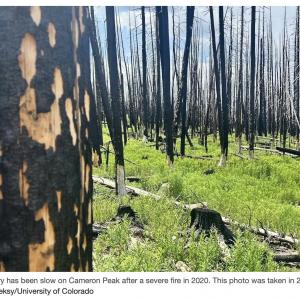Fighting Fire with Fire: Why We’re Not Ready for Wildfire Season
Date
As another fire season begins across the western U.S., one of the most effective tools for reducing catastrophic wildfire remains underused: controlled burns. Also known as prescribed fires, these carefully planned burns reduce the build-up of dry vegetation—fuel for future wildfires—under monitored conditions. When executed correctly, they can prevent a smoldering forest floor from becoming a catastrophic inferno. For millennia, Indigenous communities used fire to manage land, restore ecosystems, and maintain healthy, fire-adapted landscapes. But over the past century, fire suppression became the dominant strategy. Agencies like the U.S. Forest Service once promoted a “put out every fire” approach, an idea that led to the dangerous accumulation of flammable debris across millions of acres. Today’s science affirms what Indigenous knowledge has long understood: fire, when used wisely, is essential and a natural ecological process. Prescribed burns recycle nutrients, reduce fire hazards, restore wildlife habitat, and create natural firebreaks.
Still, scaling up these efforts is not simple. A major challenge is staffing and planning. Each burn requires trained professionals to assess conditions, manage logistics, and respond quickly if plans change. Additionally, successful burns require critical weather data and forecasts to determine conditions for prescribed fire so they can stay controlled. Climate change complicates matters further. Drier springs and prolonged fire seasons shrink the windows when burns can be conducted safely. What used to be weeks of viable conditions are now just a few unpredictable days, requiring precise coordination to avoid missing the opportunity. Public perception is another hurdle. Though nearly all prescribed burns go as planned, rare incidents, like the 2022 Hermits Peak Fire in New Mexico, have generated fear and political backlash. As a result, some agencies have grown more hesitant to approve prescribed fires, worried about liability or criticism if a burn goes wrong.
To move forward, experts say funding and political support are essential. Some momentum is building; new programs are training burn crews, supporting partnerships with Indigenous fire practitioners, and engaging local communities. However, prevention efforts remain underfunded compared to emergency firefighting budgets, and staffing is an ongoing concern. Laura Dee, co-lead ecologist at the NC CASC says, “Losing people in these roles is like firing all primary care doctors and leaving only EMTs. Both are clearly needed. As many people know from emergency room bills, preventing emergencies is less costly than dealing with the damage later.” Controlled burning isn’t a cure-all. But it’s a powerful, proven tool, one that we can’t afford to ignore. To manage fire-prone landscapes, we must stop treating fire solely as a threat and start embracing it as a tool for resilience.


